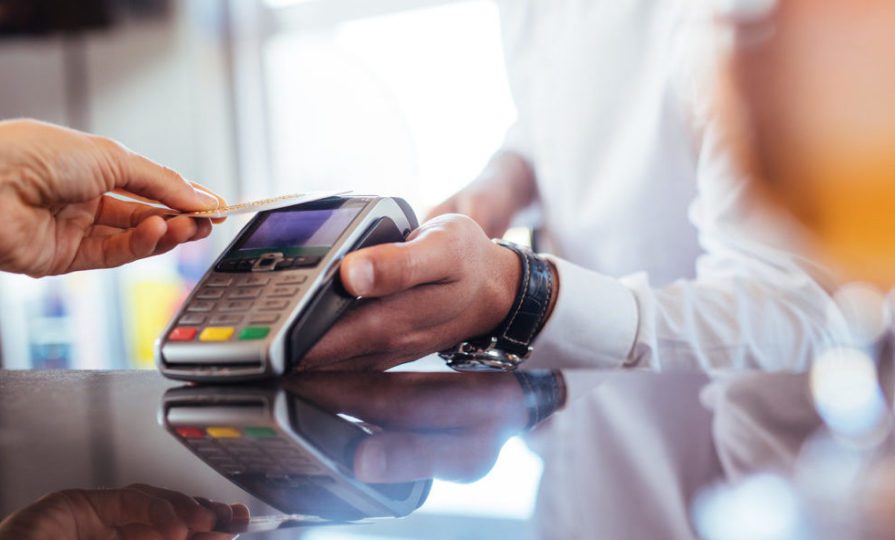Contactless payments in the age of coronavirus

Register to get 1 free article
Reveal the article below by registering for our email newsletter.
Want unlimited access? View Plans
Already have an account? Sign in
In a matter of weeks our entire payments ecosystem has shifted. Many supermarkets have reacted to the coronavirus pandemic by implementing plastic barriers at checkouts to protect customers and staff during the shopping transaction. Meanwhile countless retailers and services have shifted to cashless payments to remove contact with consumers and increase hygiene in the payment process itself.
This follows advice from the European Banking Authority (EBA) and the World Health Organisation (WHO) about not using cash to better stem the spread of the virus. The WHO goes so far as to recommend ‘holding a card above a payment terminal’ – or contactless payments – or using a smartphone payment app.
Raising the payment limit
To support customers through this move to contactless, PIN-free card payment limits have also been raised from £30 to £45 in the UK, and to an equivalent amount in 29 other countries across Europe. This aims to reduce the need for physical contact during transactions and to minimise the number of transactions where customers will need to touch ‘dirty’ pin pads.
So what does this mean for the payments industry beyond the current climate? While the move to contactless is welcome to protect consumers during this challenging time, increasing payment limits on contactless payments does raise questions about the security of payment transactions in the future.
A more hygienic payment process
With these updates to the way we pay for goods changing our shopping behaviour, we will all become used to making fast, contactless card payments. Yet, there is still the risk of payment card fraud with small transfers on contactless terminals. Therefore the payment industry needs to adopt a third way – a secure method of payment that reduces the level of card fraud while also removing the need for contact between the consumer and the retailer.
Using biometrics to verify payments is a way to balance both security and hygiene in payments of the future. With a fingerprint biometric smart card, consumers can scan their fingerprint on their own payment card to secure a transaction above the contactless payment limit.
This process secures the card to the owner and ensures they don’t need to touch shared pin pads during a purchase. Therefore, consumers can shop feeling assured that their money, and their personal health will be protected, regardless of how much they are spending.
Speeding up the supermarket queue
When paying for goods, consumers want a transaction process that is fast, secure and free from hold ups. Introducing authorisation with a fingerprint will secure the payment card, removing the need for PINS and reducing the need for a payment limit – whether at £45 or £30.
Importantly this process will also make the transaction faster as the in-card fingerprint sensors are positioned to provide consumers with an easy, one-tap process for payment. By embracing fingerprint biometric payment cards, banks and payment providers will not only improve consumer security and hygiene, but also make the process of purchasing goods using their contactless card quicker and easier. Ultimately this can help cut the transaction time and, in today’s difficult retail environment, help to reduce queues at the checkout.
Personal protection
Biometric fingerprint authorisation links the person to the payment card. For transactions to be processed, the card has to be in the owner’s physical possession. This eliminates the incentive for theft or mis-use of payment cards, both online and in person.
With this new method, fingerprint data is held securely on the card, not in a shared database. Therefore the owner’s biometric data never leaves the card and cannot be subject to a data breach. On top of that, as the owner has to present their fingerprint for a transaction, consent is required to use their data for every transaction. This makes the payment process secure for the payment provider, but also for the consumer, ensuring that their data cannot be hacked or recreated.
Prepare now for payments of tomorrow
This is a changing and uncertain time. But behaviours that take hold today may continue into the future. If consumers like and get used to the process of faster contactless payments with higher limits during this period, they will be loathed to lose them when life returns to ‘normal’.
These changes have even lead many analysts to suggest this large-scale shift to contactless card payments could mean the end for cash in the long term, as more consumers embrace contactless to increase hygiene during the payment process, and beyond.
Therefore it’s important that banks and card providers respond now to this health crisis by embracing innovative, secure, and hygienic biometric smart cards, to prepare our payment ecosystem for the world of tomorrow.
David Orme, senior vice president at IDEX Biometrics ASA







